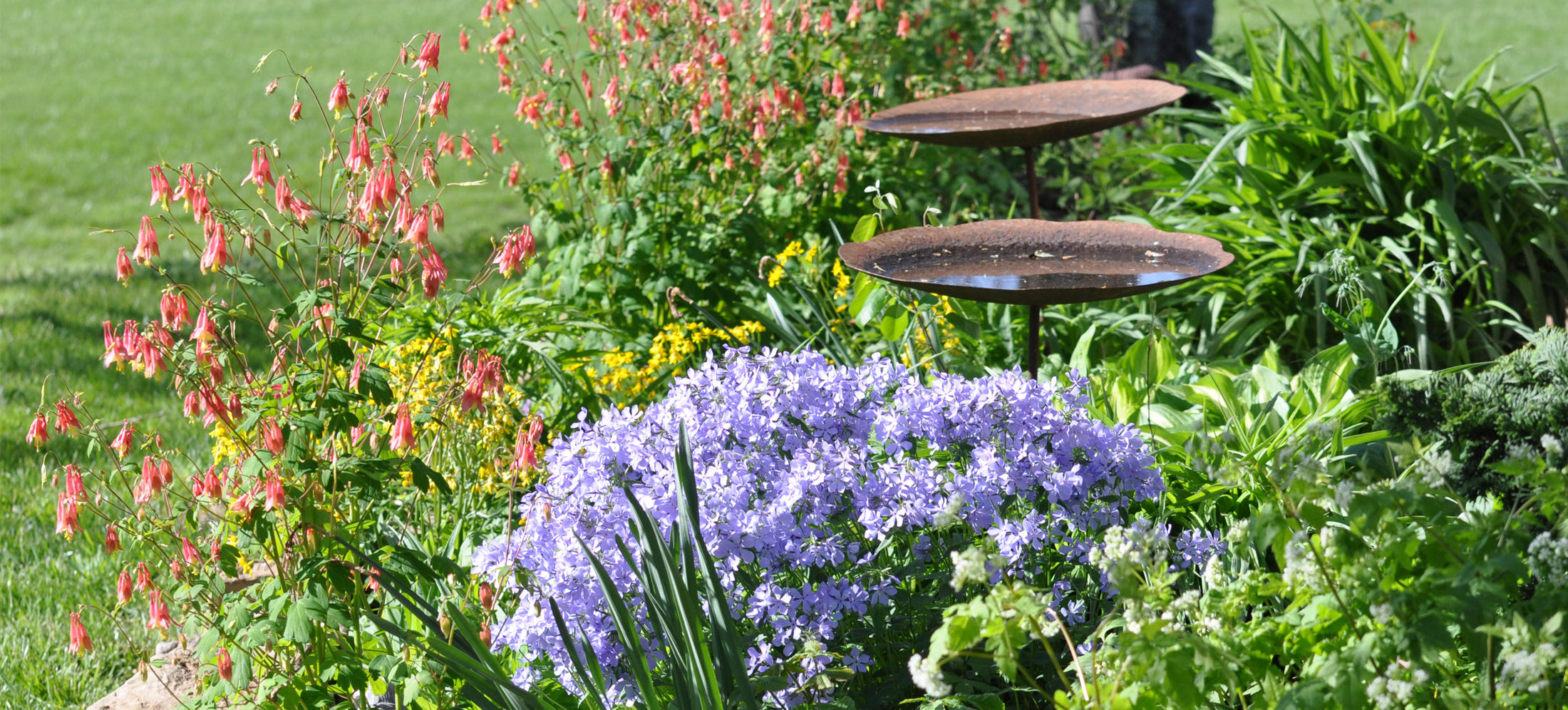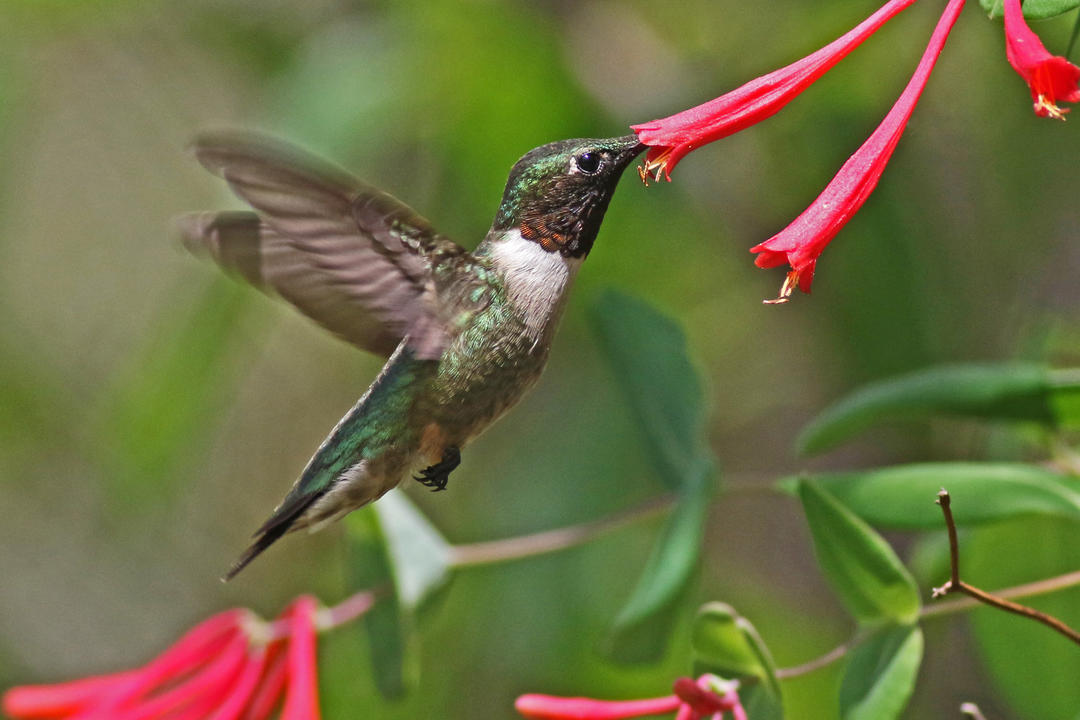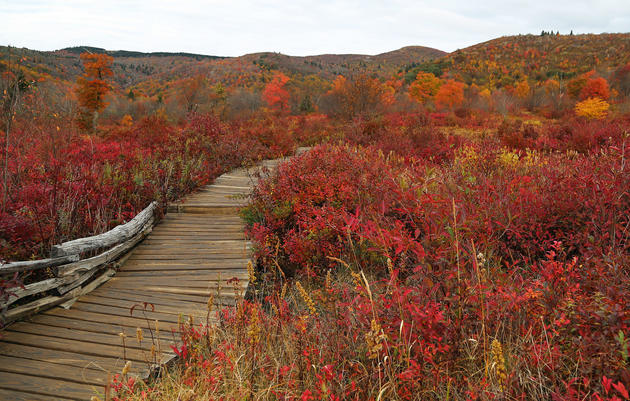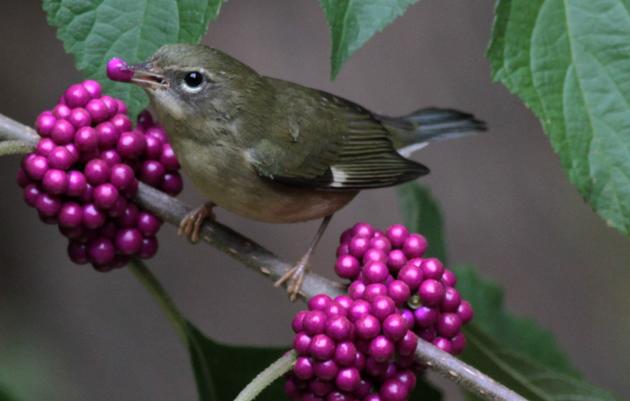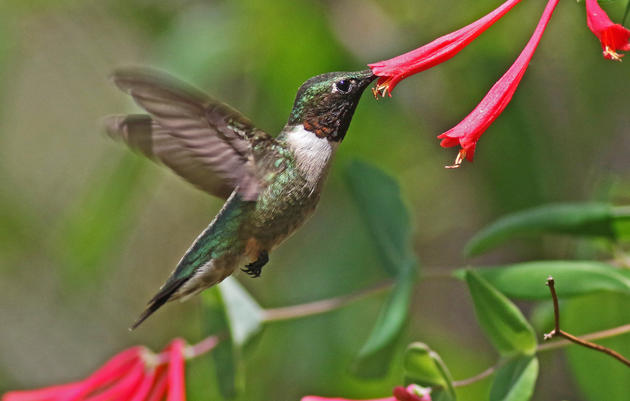Nectar is a sweet treat that provides essential nutrients for one of our most recognizable backyard birds - the hummingbird! Find all these plants and more on our 2018 Bird-Friendly Native Plants of the Year list.
“Bird-friendly plants help birds by giving them a food source and coverage,” said Mark Johns, operations and program supervisor at Hemlock Bluffs Nature Preserve. “Using native species is the best way to go because they’ll help you save money, water, and require less maintenance.”
Throughout the spring and summer, hummingbirds especially flock to nectar-producing plants to give them the energy they need.
Contact your local participating retailer to see if they have these bird-friendly native plants in stock for spring (and if not, request they consider adding them to their inventory!).

WELCOME WILD COLUMBINE INTO YOUR GARDEN
Wild Columbine (Aquilegia Canadensis) sports beautiful light pink/red and yellow flowers in early spring, from March through April. They have drooping, bell-like flowers with yellow petals with a red spur and red sepals. They are native to woodland and rocky slopes in eastern North America. Wild Columbine can be between 6 inches and 3 feet tall and the leaves are lobed and grouped in threes. The round end of the spur contains nectar, which butterflies, hummingbirds and bumblebees all love to eat!
This plant is important for migrating Ruby-throated Hummingbirds who arrive in North Carolina after making a nonstop crossing of the Gulf of Mexico. The Wild Columbine gives them the energy they need!
“One of the biggest threats to birds is habitat loss,” said Ben Skelton, owner of Skelton’s Landscaping Service and New Hope Audubon Society volunteer. “Planting native plants in your yard will help our bird species raise chicks and migrate successfully.”
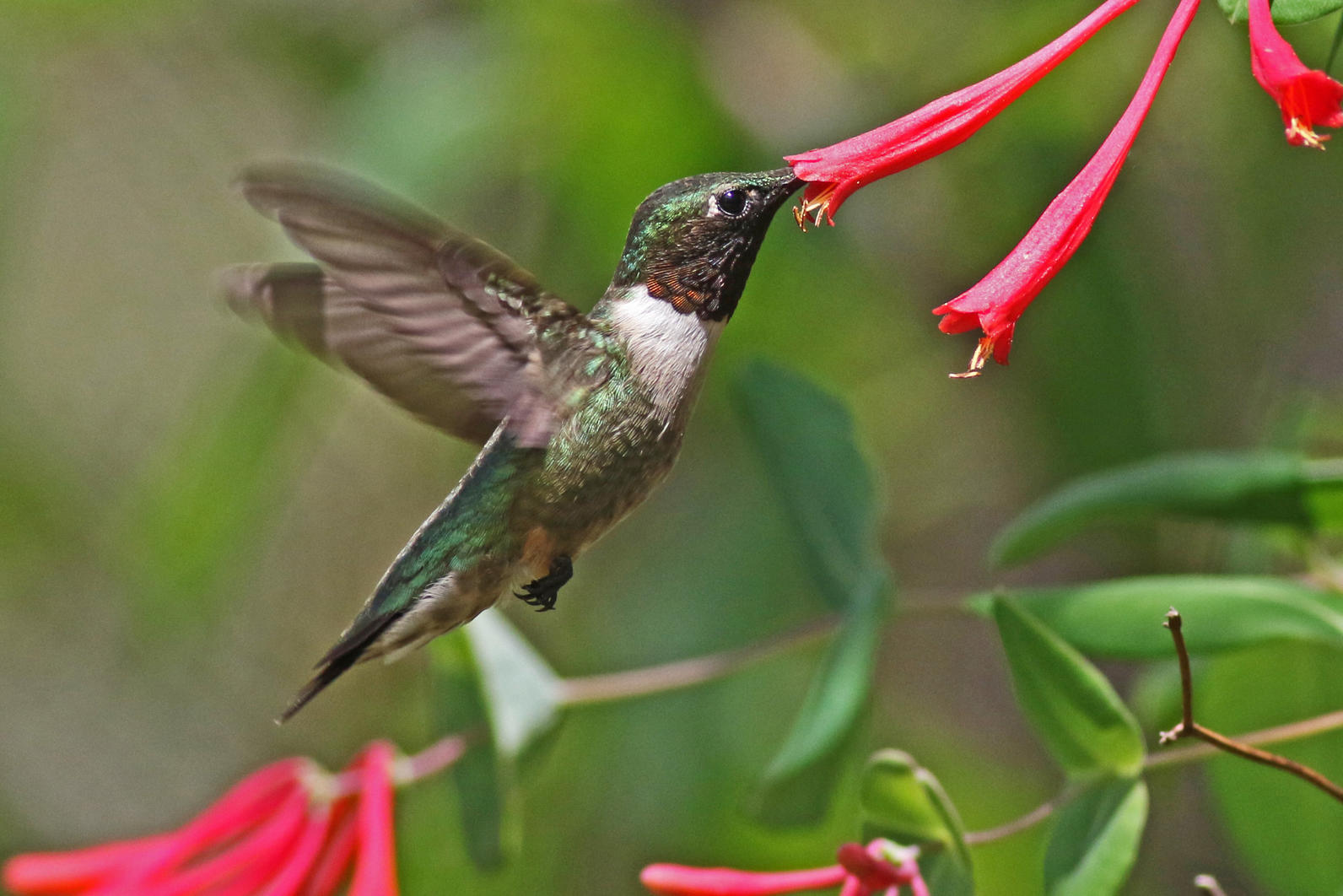
CAPTIVATE CROWDS WITH CORAL HONEYSUCKLE
Coral Honeysuckle (Lonicera sempervirens) flowers from March through July, which is also peak season for spotting hummingbirds in North Carolina! The beautiful red flowers and nectar are very attractive for hummingbirds, butterflies and bees. They have large, non-fragrant, narrow, trumpet-shaped flowers that are scarlet to orangey-red and yellow in the inside and grow between 8 and 15 feet tall. The flowers appear in late spring and appear in clusters. While the berries might look attractive, they are inedible for humans.
The Ruby-throated Hummingbird loves this plant.
You may also recognize it from the cover of Audubon’s wildly popular Bird-Friendly Native Plants Brochures!

SPOTTED BEE BALM: A SPECTACULAR ADDITION
Spotted Bee Balm (Monarda punctata) has delicately purple-spotted pale white, yellow, or pink tubular flowers, and attracts hummingbirds and butterflies in late summer to early fall, from July through September. The spotted bee balm can be 2 to 3 feet high. The flowers occur in whorls, forming a dense, elongated spike at the end of the stem.
The Spotted Bee Balm attracts pollinators in great numbers, especially wasps. Predatory wasps are good for your garden because they control grubs, pest caterpillars and other harmful insects.
Birds who love this plant include the Ruby-throated Hummingbird.
These are just a few of the plants on our 2018 Bird-Friendly Native Plants of the year list. We’ve also featured seed, berry and nut-bearing plants: learn more about our other 2018 picks here!

